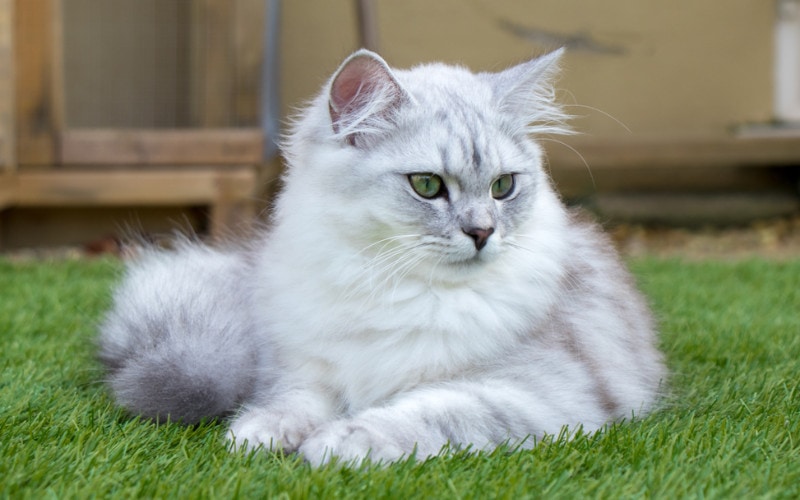How Many Bones Do Cats Have? The Skeletal Anatomy of a Cat (With Pictures)

Updated on
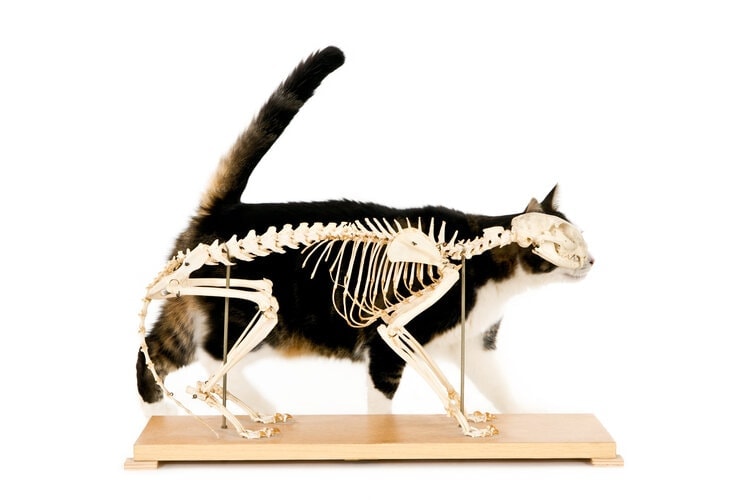
At this point, you may not even be convinced that cats have bones! The crazy ways they bend, squeeze, flop, and leap, seem to be something beyond bones and are more like a mythical element. We’ve all looked at our cats with an incredible expression when they perform some master feat of acrobatics and wonder how in the heck they manage to move the way they do, right?
The agility and grace of a cat are supported by its unique skeletal features. The average amount of bones in a cat’s body is around 230–245. Stick with us while we break it down into easy-to-understand pieces so you can honestly know your cat inside and out.
How Many Bones Are in a Cat Skeleton?
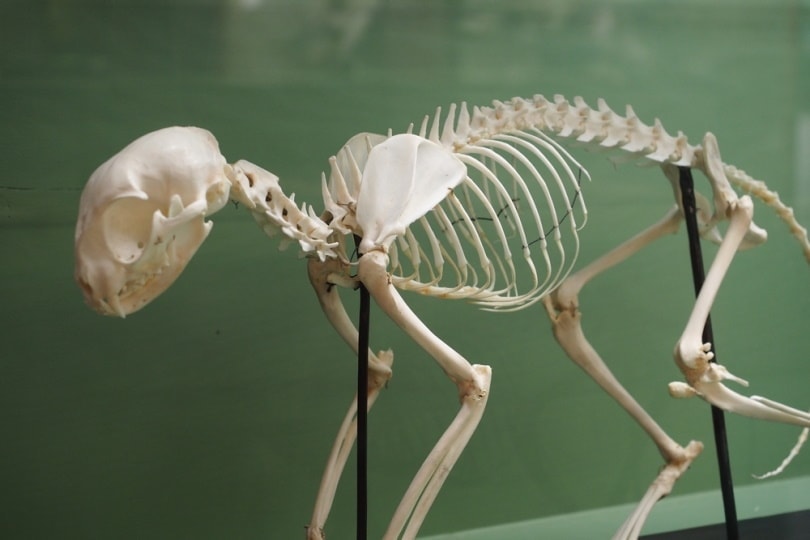
We didn’t lead with the answer to this question because there is no set answer. Strange, right? While the bone count of the human body is pretty much always the same (with a few exceptions), the number of bones in a cat’s body can vary greatly.
Usually, the average amount of bones in a cat’s body is around 230–245. This will depend on several factors, including cat breed and gender and simply genetic differences.
Understanding just how an entire skeletal system works to form a functioning animal like a cat really is not as simple as it seems, so we’ve broken it down into some bite-sized portions below for easy-to-understand info. No need to be a scientist to know how your feline friend functions!
Skull

Starting from the top down, the skull is a natural place to start. Many of us will imagine one large identifiable bone when visualizing a skull. But the skull itself is actually a construct of many smaller bones fused together to form a functional skull that holds many vital organs, the brain being the most notable.
Cats have a grand total of 29 bones that comprise their skull, both constructive facial bones and cranial bones. For perspective, despite being much larger, we have 22 skull bones, and the reason behind this is our respective evolution paths.
Cats are evolved predators, so they have more powerfully designed mandibles (jaw bones) to capture and kill prey; they require strength to crush through the bones of prey species. Domestic cats also have their own particular jaw adaptions, a narrow space for canines more designed for the small prey they catch. In addition, they have proportionally large eye sockets to house highly developed eyes.
Spine & Tail
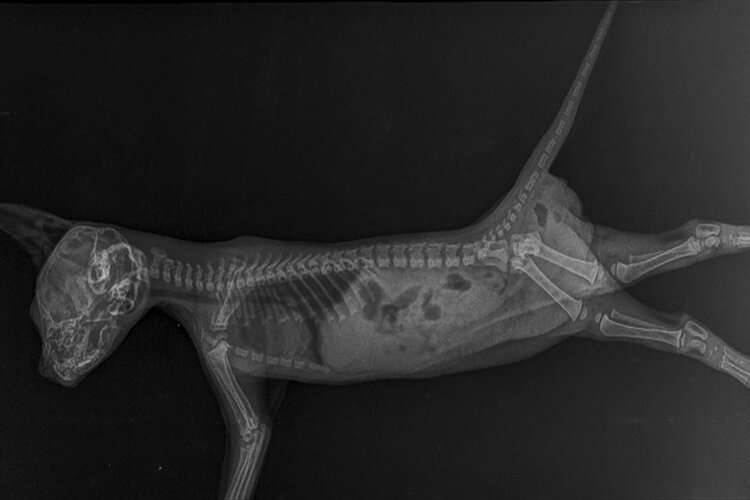
The supporting structure of the cat’s skeletal system is, of course, the spinal column. The spine not only supports many other skeletal and muscle structures, but it also protects the spinal cord, the primary component of the nervous system.
The spine is made up of vertebrates connected by ligaments. The vertebra is divided up into sections, starting at the top: cervical (neck), thoracic (that has rib connection points), lumbar (supports a lot of weight), sacral (hip articulation point), and caudal (the tail).
The fundamental difference between our spinal structure and cats lies with the caudal vertebrate. Only 3 of these exist in humans and are fused to form the coccyx, or “tail bone,” but for cats, up to 23 caudal vertebrates make up the tail. This will vary depending on your cat; tailless cats like Manx can also have none of these vertebrates. These cats will have 23 fewer bones than a cat with a long tail!
The tail allows cats to counterbalance their movements to stay steady and agile. They also have extra lumbar and thoracic vertebrates, with elastic disks between each vertebrate that enable them to be extra flexible.
This particularly spinal structure is what allows cats to have the “righting reflex,” or the fantastic acrobatics they can perform quickly and smoothly in midair to land comfortably on their feet. It also contributes to their speeds by allowing for repeated and quick extension and flexion of the spine.
Torso and Limbs
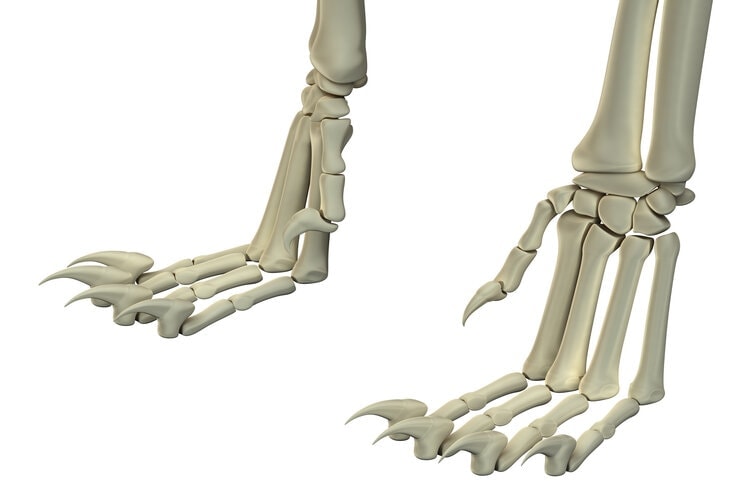
Extending down and back from a cat’s skull, are even more awesome skeletal features to be found that give us some insight into why and how cats are the way that they are. Their forelimbs extend onto clavicles (collarbones) but are not actually attached to the shoulder. Instead, they are “free-floating” and do not rotate on a joint.
For this odd reason, cats can pass through any space in which they can fit their heads regardless if the rest of their body is wider than the head.
One of our other favorite parts of our pet cats is their little feet! Nothing cuter than the little toe beans of a cat, right? Well, we are about to change your perception of those too! Cats have the same bones in their legs and feet as we have in our feet, just with different proportions.
Cats have a metatarsus just like us, which you would know as the long foot bone that makes up most of your foot from the toes to the ankle. This bone is extended from their footpad up to the first apparent joint in cats. This means that the actual feet cats walk on are skeletally equivalent to just our toes! They are basically stepping on tippy toes all the time. This is an adaption purely for the amazing jumping and leaping feats cats are well known for. It also absorbs the shock of landing when jumping from heights.
Final Thoughts
We’ve done our best to condense some of the key features of a cat’s skeletal system into this article to give you an idea of just how particular a cat’s body is to support its lifestyles and behaviors.
You can also now see there is no one answer for an official bone count as the number of bones will differ based on various factors like tail or no tail, the number of toes a cat has, and whether they are male or female: male cats have an extra bone on the penis! If you didn’t think your cat was that amazing before, we’re sure you have a newfound appreciation for them now!
Related Reads:
Featured Image Credit: De Jongh Photography, Shutterstock






